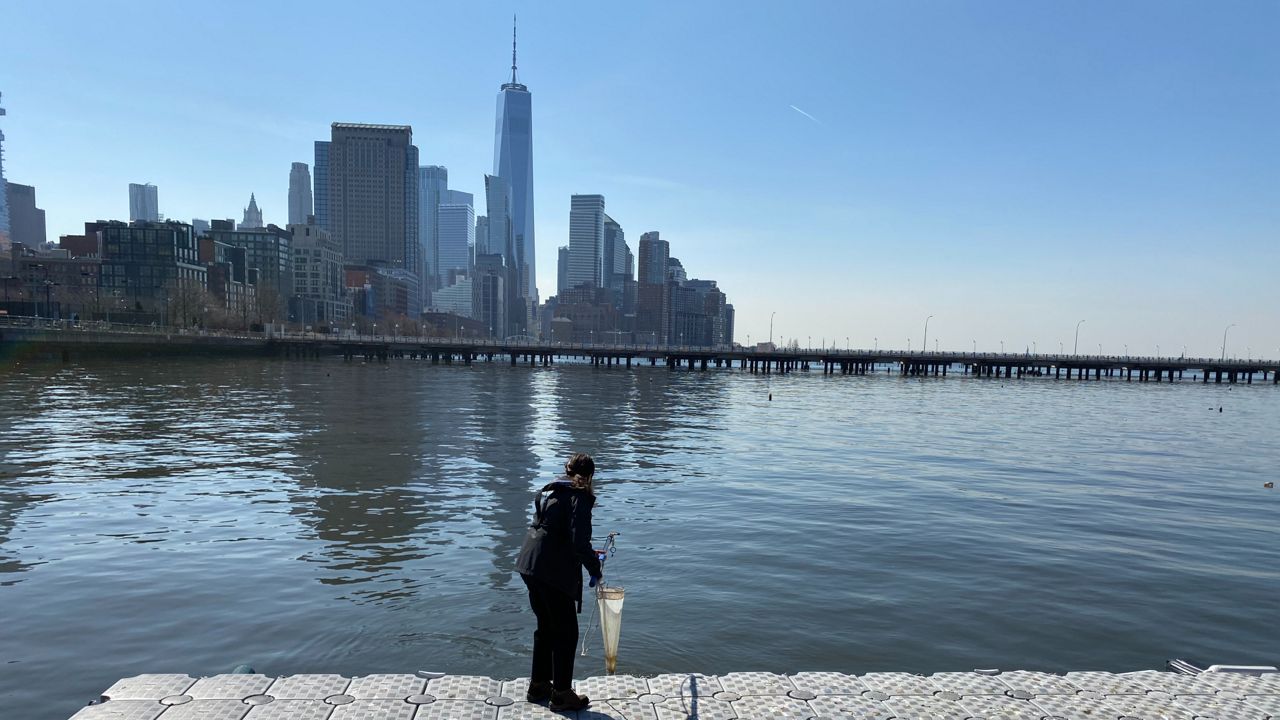Tina Walsh is going fishing on the Hudson. Not with a rod and reel, but a tow net made of fine mesh with a collection vial at the bottom. Hudson River Park's senior director of Education and Outreach is hoping to fill that vial with plankton. So what is plankton?
"They are tiny, often microscopic organisms that are plants and animals that can't swim against currents so they actually just end up drifting and floating in the river. So actually one of the best examples of plankton in a jellyfish," said Walsh.
She is out to collect microscopic drifting plants called phytoplankton. Their appearance in the Hudson this time of year, a plankton bloom so to speak, is a sign that the river is waking up for the spring.
"It's a sign that we are starting to gear up, we will probably start to see more fish in our oyster cages and our traps along the river, and it's a sign that spring is just about here," said Walsh.
While you can't tell they are there by glancing at the river, you can see the difference in a sample of water when they are and when they are not. They are the base of the marine food chain and helpful in another way, too.
"They are actually responsible for most of our oxygen. So, 50% of the oxygen in the world is actually provided by phytoplankton," Walsh added.
Part two of this process is to raise awareness about the river, which is cleaner now than it has been in decades, but still faces challenges.
Showing students and others what these super tiny organisms look like under a microscope is a way of explaining what lives in the river. While most of Hudson River Park’s educational programming has been virtual during the pandemic, Walsh says they hope to do more in-person teaching in the summer.
"Big picture, it's teaching New Yorkers how to love the Hudson River and the estuary itself," said Walsh, who after eight years working at the four-mile-long Park on the West Side of Manhattan grows more attached to it every day.
"It's such a special place where the city and the river meet, and you can really have such an impactful ecosystem right in the heart of Manhattan," said Walsh, who added she feels lucky to spend her days working on the river.



